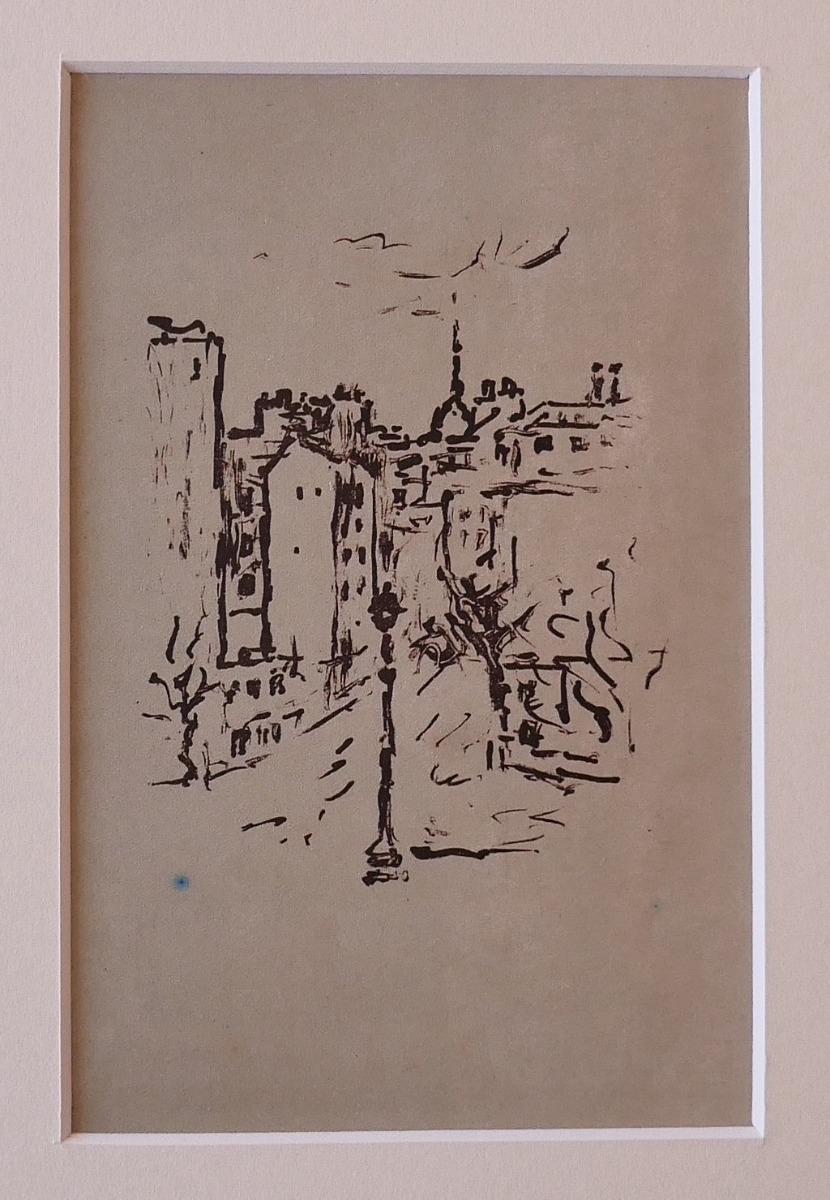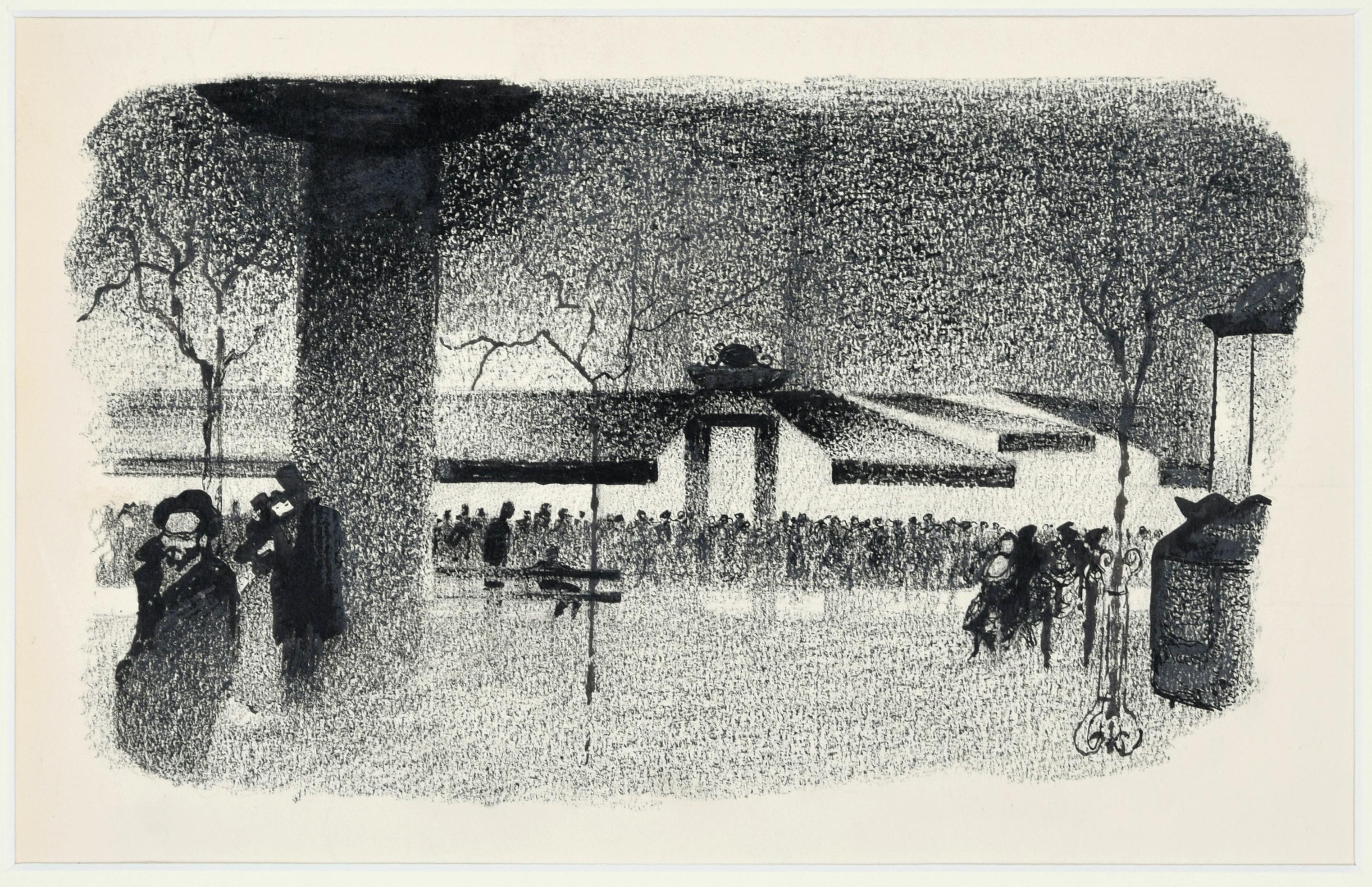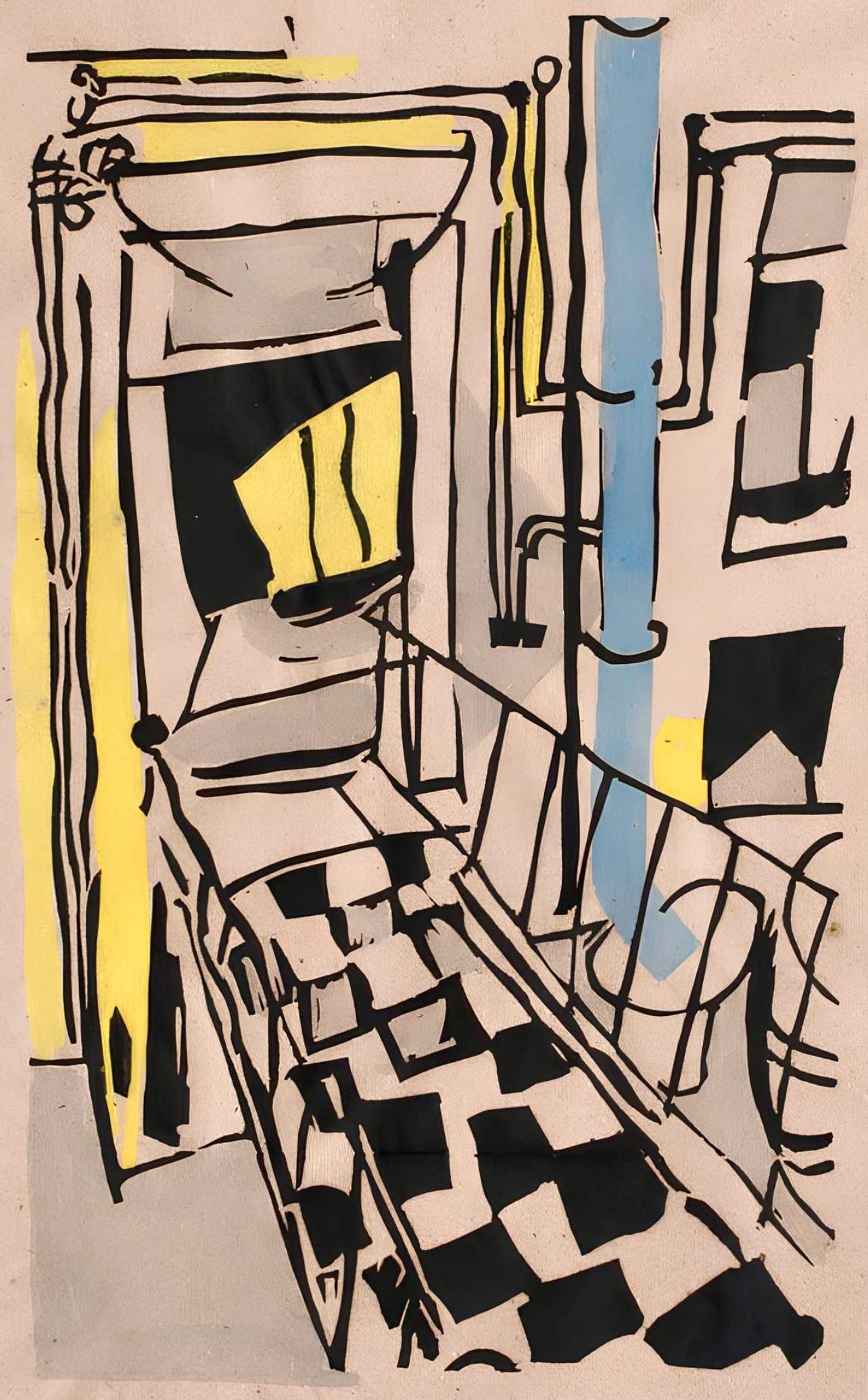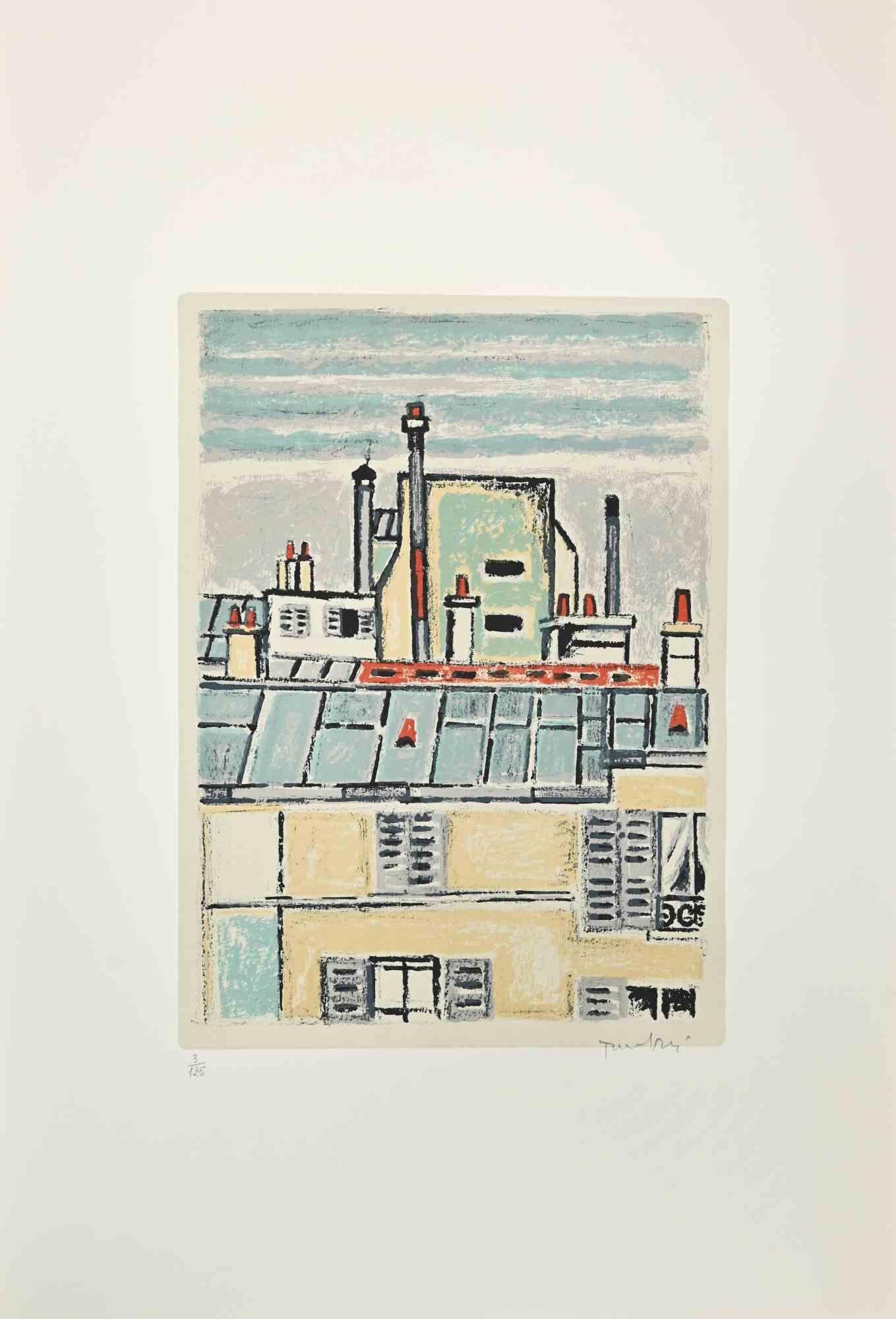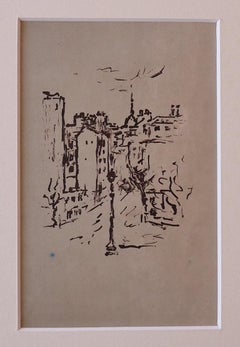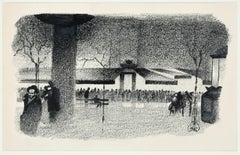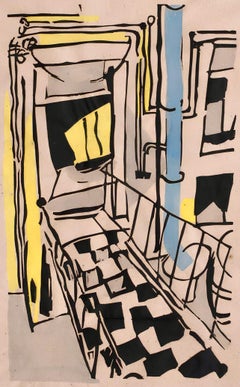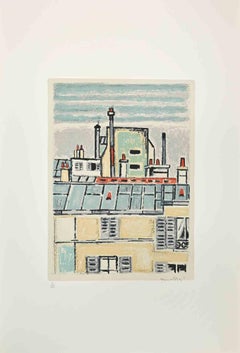Items Similar to The Grey City, 1933 - Original Lithograph
Want more images or videos?
Request additional images or videos from the seller
1 of 11
Jacques CamusThe Grey City, 1933 - Original Lithograph1933
1933
$235
£179.37
€200
CA$331.41
A$364.11
CHF 190.29
MX$4,342.34
NOK 2,409.55
SEK 2,244.70
DKK 1,524.38
About the Item
Jacques Camus
The Grey City, 1933
Original lithograph and stencil
Unsigned
On paper 39 x 29 cm (c. 15.3 x 11.4 inch)
INFORMATION : This lithograph is part of the "Idées" portfolio produced by A.Calavas in Paris for the decorative arts bookstore in Paris, in 1933.
Very good condition, slightly yellowed edges
- Creator:Jacques Camus (French)
- Creation Year:1933
- Dimensions:Height: 15.36 in (39 cm)Width: 11.42 in (29 cm)
- Medium:
- Movement & Style:
- Period:
- Condition:
- Gallery Location:Paris, FR
- Reference Number:1stDibs: LU464316408942
About the Seller
4.9
Platinum Seller
Premium sellers with a 4.7+ rating and 24-hour response times
Established in 2010
1stDibs seller since 2016
3,788 sales on 1stDibs
Typical response time: <1 hour
- ShippingRetrieving quote...Shipping from: Paris, France
- Return Policy
More From This Seller
View AllThe Dove and the Snake, 1933 - Original Lithograph
By Jacques Camus
Located in Paris, IDF
Jacques Camus
The Dove and the Snake, 1933
Original lithograph and stencil
Unsigned
On paper 39 x 29 cm (c. 15.3 x 11.4 inch)
INFORMATION : This lithograph is part of the "Idées" p...
Category
1930s Art Deco Figurative Prints
Materials
Lithograph, Stencil
The Yellow Castle, 1933 - Original Lithograph
By Jacques Camus
Located in Paris, IDF
Jacques Camus
The Yellow Castle, 1933
Original lithograph and stencil
Unsigned
On paper 39 x 29 cm (c. 15.3 x 11.4 inch)
INFORMATION : This lithograph is part of the "Idées" portfo...
Category
1930s Art Deco Figurative Prints
Materials
Lithograph, Stencil
Art Deco : The Palm Tree under the Sun, 1933 - Original Lithograph
By Jacques Camus
Located in Paris, IDF
Jacques Camus
The Palm Tree under the Sun, 1933
Original lithograph and stencil
Unsigned
On paper 39 x 29 cm (c. 15.3 x 11.4 inch)
INFORMATION : This lithograph is part of the "Idé...
Category
1930s Art Deco Figurative Prints
Materials
Lithograph, Stencil
Art Deco : The Vine Woman with her Arrows, 1933 - Original Lithograph
By Jacques Camus
Located in Paris, IDF
Jacques Camus
The Vine Woman with her Arrows, 1933
Original lithograph and stencil
Unsigned
On paper 39 x 29 cm (c. 15.3 x 11.4 inch)
INFORMATION : This lithograph is part of the "...
Category
1930s Art Deco Figurative Prints
Materials
Lithograph, Stencil
Paris : Art Inspiration on the City - Original wooodcut, Handsigned
Located in Paris, IDF
Theo SCHMIED (1900-1985)
Paris : Art Inspiration on the City, 1928
Original woodcut
Handsigned in pencil
Numbered /160
On vellum 32.5 x 25.5 cm (c. 13 x 10 in)
Bears the blind stamp...
Category
1920s Art Deco Landscape Prints
Materials
Woodcut
Paris, Luxembourg Garden - Original wooodcut, Handsigned and numbered /105
Located in Paris, IDF
Emile BOIZOT
Paris, Luxembourg Garden - 1920
Original woodcut
Handsigned in pencil
Numbered /165
On vellum 32.5 x 25.5 cm (c. 13 x 10 in)
Bears the blind...
Category
1920s Art Deco Landscape Prints
Materials
Woodcut
You May Also Like
Paris - Lithograph by Orfeo Tamburi - 1946
By Orfeo Tamburi
Located in Roma, IT
Paris is a beautiful artwork realized by Orfeo Tamburi in 1946.
Lithograph on paper.
Good conditions.
The artwork represents a view of the french city Paris with confident strokes...
Category
1940s Modern Landscape Prints
Materials
Lithograph
Quartier Latin - Lithograph by A. Hallman - 1930s
By Adolf Hallman
Located in Roma, IT
Latin District is a beautiful original lithography artwork on ivory-colored paper, made by the Swedish illustrator and reporter Adolf Reinhold Hallman in 1930 ca.
The state of pres...
Category
1930s Figurative Prints
Materials
Lithograph
$411 Sale Price
30% Off
Pougny, Composition, Pougny, dix linogravures originales, 1914-1920 (after)
By Jean Pougny
Located in Southampton, NY
Linocut on vélin vergé ancien paper. Unsigned and unnumbered, as issued. Good condition. Notes: From the folio, Pougny, dix linogravures originales, 1964. Published by Au Vent d'Arle...
Category
1960s Cubist Abstract Prints
Materials
Linocut
$4,076 Sale Price
20% Off
Free Shipping
View of Paris - Lithograph By Orfeo Tamburi - 1980s
By Orfeo Tamburi
Located in Roma, IT
View of Paris is a Modern artwork realized by Orfeo Tamburi (Jesi, 1910 – Paris,1994) in the 1980s.
Colored Lithograph on paper.
Hand-signed.
Numbered on the lower, Edition, 12...
Category
1980s Contemporary Figurative Prints
Materials
Lithograph
"Paris, " Original Lithograph Poster with Paris Landmarks signed by Paul Colin
By Paul Colin
Located in Milwaukee, WI
"Paris" is an original lithograph poster by Paul Colin. This was the first official poster from Paris after World War II and depicts three doves flying above the Arc de Triomphe, Not...
Category
1940s Post-War More Prints
Materials
Lithograph
Pougny, Composition, Pougny, dix linogravures originales, 1914-1920 (after)
By Jean Pougny
Located in Southampton, NY
Linocut on vélin vergé ancien paper. Unsigned and unnumbered, as issued. Good condition. Notes: From the folio, Pougny, dix linogravures originales, 1964. Published by Au Vent d'Arle...
Category
1960s Cubist Abstract Prints
Materials
Linocut
$4,076 Sale Price
20% Off
Free Shipping
